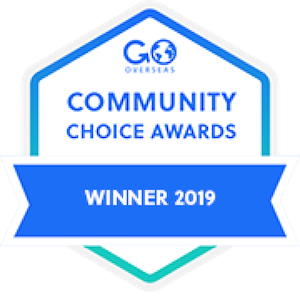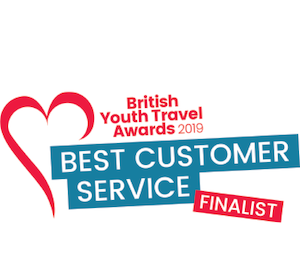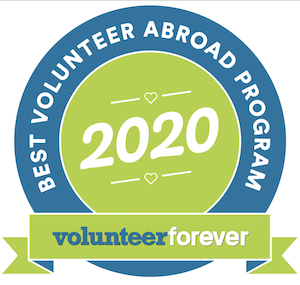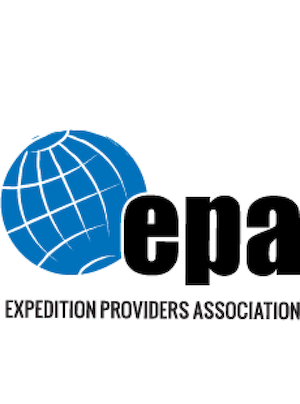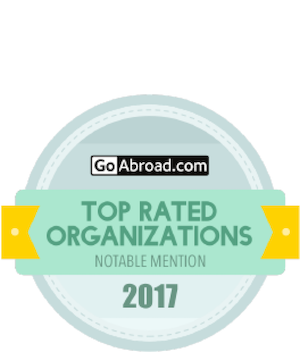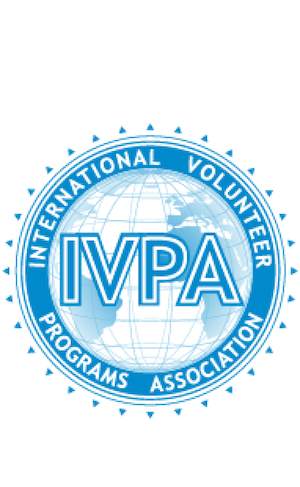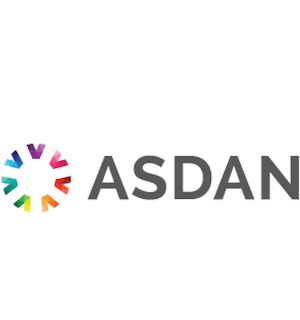At a glance
- Live on the Galapagos Islands as a conservation volunteer. Care for Giant Tortoises and plant tree saplings.
- Exclusive access to the Galapagos National Park. A truly unique opportunity to learn, help and explore.
- You’ll stay on San Cristobal Island and live with other volunteers in shared accommodation.
Is Galapagos Islands Conservation work in Ecuador right for me?
Are you passionate about protecting our planet? Do you want to experience living in one of the most unique environments on earth? Are you looking for environmental volunteer opportunities? Then this is the ideal project for you!
This project is also a great fit for you if you want to pursue a career in wildlife conservation one day. You’ll have relevant experience to add to your CV, and interesting points to talk about in interviews. Getting actively involved will also show your commitment to conservation work, and you’ll learn directly from conservationists.
You don’t need previous experience to work in wildlife conservation with us. We’ll teach you everything you need to know, and you’ll work alongside experienced conservationists. You’ll also have support from our Projects Abroad staff should you need anything.
Our Galapagos Island Conservation Project runs year round, and you can join at any time from a minimum of one week. We do advise you to stay as long as you can, as it’s very likely you won’t want to go home after only one week!
What will I be doing as a wildlife conservation volunteer?
You’ll focus on supporting the work of local conservationists at the Galapagos National Park. Here are some of the tasks you can expect to do during your placement:
Your activities will be divided into four main categories:
Conduct surveys to monitor wildlife species
Throughout your stay, you will work at the giant tortoise breeding centre. This species is one of the most fascinating and famous animals found on the Galapagos Islands. You’ll help:
- Feed the tortoises
- Clean their enclosures and pools
- Take biometric data, like measurements
- Conduct population surveys
You’ll also assist with sea lion monitoring and bird surveys throughout your time with us. This is important work, as it helps us keep tabs on their numbers. You may also get the opportunity to participate in a marine iguana census. You’ll count individuals, note the composition of the population, and identify breeding sites.
Help control invasive animal species
Alien species are a problem in the Galapagos, as the ecosystem has no natural predators. These foreign species are preying on the island’s animals, which is a big issue. You will assist with controlling invasive species and protecting indigenous animals from these introduced predators throughout your stay.
The Galapagos petrel, a marine bird, is one of the native bird species that we have been monitoring and assisting. Unfortunately, the petrel population is under threat because of a rising number of alien rats on the islands. Rats attack nesting birds and eat their eggs.
In response to this, Projects Abroad and the Galapagos National Park Agency got a special poison designed to attack the rats’ immune systems. This poison does not affect other animals and helps control the rat population, which makes this an important environmental sustainability project.
Our volunteers monitored the petrel breeding population and we are thrilled to see that their numbers increased by 10% in 2017! We can link this directly to the fact that rat numbers have dropped by 40%.
Assist with the eradication of introduced plant species
Alien plants are one of the greatest threats to the endemic species and ecosystems of the Galapagos Islands. Eradicating these species is crucial to help indigenous plants thrive. You’ll remove plants such as guava, avocado, and raspberry plants, and replace them with indigenous species. We grow the indigenous plants in a nursery in the park.
Help with community clean-ups and education programmes
You’ll assist with beach clean-ups throughout your stay. By removing the litter from local beaches we protect local animals from unnecessary dangers and keep the natural environment as clean as possible.
You may also need to help with the weighing of this collected litter. We weigh the rubbish to try and identify the areas of the island that collect the most rubbish. This also allows us to see whether the amount of litter on the island is increasing or decreasing.
During your stay, you may also get the chance to participate in a wildlife conservation education programme. This will involve running workshops at local schools to raise awareness about the natural environment and the importance of conservation.
Where in Ecuador will I be working?
San Cristobal
You’ll live in Puerto Baquerizo Moreno, a town on San Cristobal Island in Ecuador. Part of the Galapagos archipelago, San Cristobal is the main island and is located about 1,000km from Ecuador. The safe and relaxed coastal town of Puerto Baquerizo Moreno is renowned for the large population of sea lions that live harmoniously with the locals. This small, lively town is an ideal base from which to explore the Galapagos.
You will work both in the Galapagos National Park, and in smaller areas on the island. We are the only volunteer organisation to have an official agreement that allows us to work within the Galapagos National Park. This will ensure you have a unique experience working with the Galapagos Islands animals.
The idyllic Galapagos Islands are renowned for their gorgeous scenery and plethora of wildlife. The ideal destination for anyone with a love of biology, science, plants and animals, these famous islands are home to a large number of species that occur nowhere else in the world. Photo opportunities abound here, so be sure to bring your camera along!
What will a typical day on the Galapagos Islands Conservation Project look like?
No one day will be exactly the same as you’ll be working on multiple different animal conservation initiatives throughout your time in the Galapagos. You can expect to participate in most animal conservation projects listed above in any given week.
An average week day will begin with breakfast at your shared accommodation lodge. You will then head to the Projects Abroad office, where you’ll be transported to your work site. Your activities will begin at around 8am, unless you’re going bird watching. This activity requires an early start of 5am.
Once you finish up with your work around 1:30pm, you’ll have the rest of the day to relax. Stroll along the beach, enjoy dinner with your fellow volunteers, or find a spot to watch the sun go down. You’ll also have the weekends free to explore and experience this tropical paradise. Learn how to scuba dive, visit nearby islands, or enjoy well deserved siestas in the sun!

What are the aims and impact of this project?
The main aim of this project is to conserve and preserve the unique and abundant fauna and flora found on the Galapagos Islands. We strive to achieve this goal through practical hands-on work experience with animals and research.
Many of the precious endemic species of the Galapagos are under threat due to the alien species that have been introduced onto the island. As so many of these plants and animals are unique to this environment, protecting them from these threats is essential. By participating in this project and working in a wildlife conservation, you will contribute towards the protection of these special plants and animals, and help them survive.
The Galapagos National Park also needs all the help you can give them. The park is understaffed and the conservationists need help to carry out all the necessary research and monitoring activities.
We also strive to make a bigger impact through our conservation education programme. By teaching children and local communities about the importance of conservation, we hope to involve more people in our efforts.
Generally, we are working towards three long-term and sustainable goals through this project. They are:
- Facilitate the restoration of natural habitats
- Protect local wildlife
- Increase awareness in the local community of the importance of protecting the environment
Take part in this conservation opportunity to do voluntary work with animals and help preserve the biodiversity of the Galapagos Islands.

Management plans
We set out the aims and objectives of our projects in documents called Management Plans. We use them to properly plan the work you’ll do. They also help us measure and evaluate our achievements and impact each year.
Ultimately, our Management Plans help us make our projects better. This in turn means you get to be part of something that makes a real impact where it’s needed. Read more about our Management Plans.
Measuring our impact
Our projects work towards clear long-term goals, with specific annual objectives. Every volunteer and intern we send to these projects helps us work towards these goals, no matter how long they spend on our projects.
Every year we take a step back and look at how much progress we've made towards these goals. We put together a Global Impact Report, which documents our achievements. Find out more about the impact our global community of volunteers, interns and staff make, and read the latest report.
Food and accommodation
You'll share accommodation with other Projects Abroad volunteers and interns during your stay in San Cristóbal. This is a great way to get to know your fellow volunteers and interns, share experiences, and explore your surroundings in your free time together. You can also request to stay with a host family in San Cristóbal.
The accommodation is safe, clean, and comfortable. Your programme fees include three meals a day.
Find out more about our accommodation.
Leisure activities and free time
Our projects in Ecuador are based in the Galapagos Islands. This region is famed for the research Charles Darwin did here with its many unique animal species. It’s the ideal location to explore the natural beauty of Ecuador.
While you’re volunteering here, it’s worth checking out the beautiful beaches where seabirds circle above and sea lions laze about on the sand. You can also go snorkelling or scuba diving along the coast.
Hiking around the base of one of the many volcanoes that make up the Galapagos is spectacular and thrilling! You can also follow the Darwin trail or trek through the Punta Pitt.
There are plenty of museums and art galleries for you to learn more about the culture and history. You can also chat to locals and buy souvenirs at bustling markets.
What’s great about joining our projects is the chance to connect with other volunteers. So you can choose to explore the Galapagos independently or you can travel with the new friends you make along the way.
Safety and staff support
Your safety and security is our prime concern. We have many procedures and systems to ensure you have the support you need to enjoy your trip with peace of mind. Our Projects Abroad staff are available 24 hours a day to help, and will be on hand to make sure you settle in well at your accommodation and placement. If you encounter any problems, they will be available to help at any time.
Find out more about safety and backup.
This placement is fully researched, safety audited, and risk assessed in accordance with the British Standard BS8848 for the Adventure Travel Sector
Meet the team in Ecuador
Not quite what you’re looking for?
Take a look at the following pages where you'll find collections of similar projects:
Enquire Now
Our accreditations



